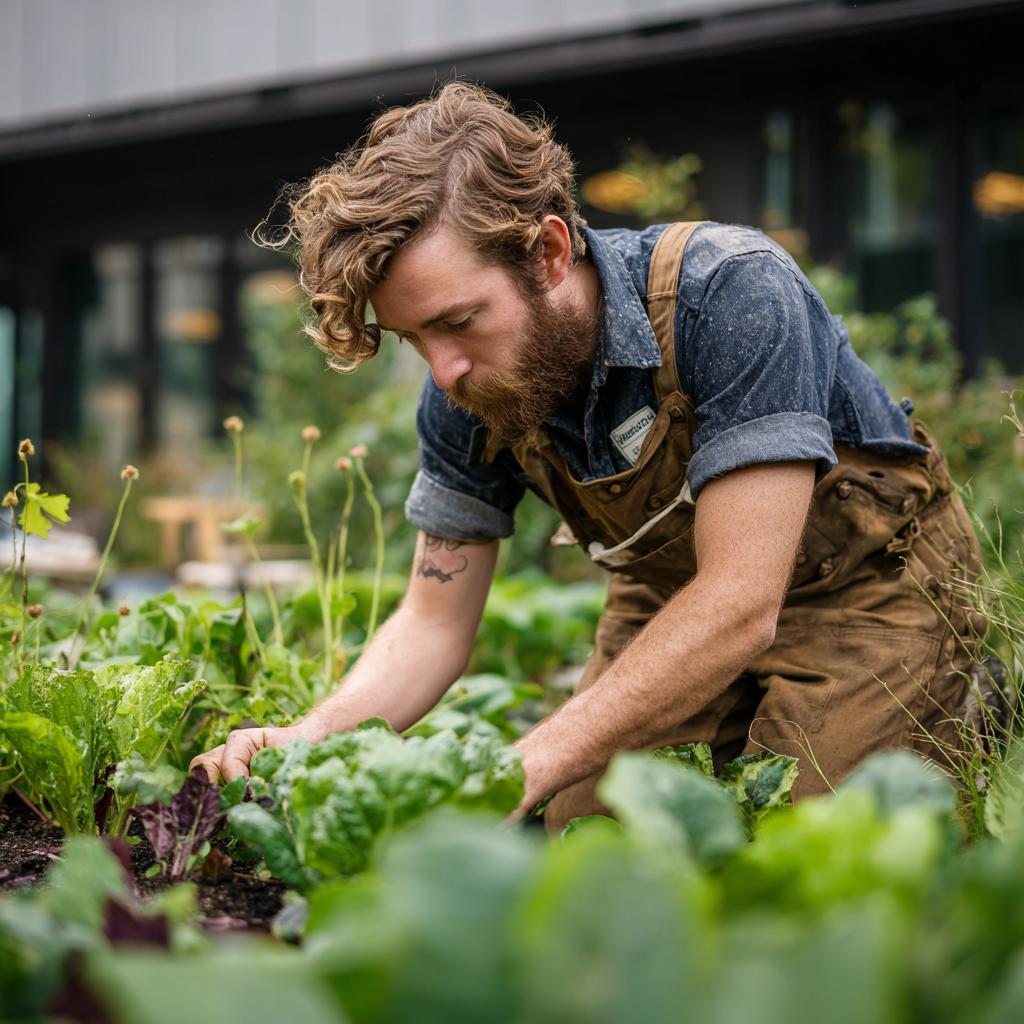Growing Your Own Food in Small Spaces
As cities continue to grow and urban populations rise, the challenge of producing sustainable, healthy food close to where people live becomes more urgent. Urban gardening offers a practical and rewarding solution by transforming small, often overlooked spaces into productive food-growing areas. Whether you have a balcony, rooftop, windowsill, or community garden plot, growing your own food in the city not only contributes to food sustainability but also promotes well-being, community engagement, and environmental stewardship.
In this comprehensive guide, we’ll explore the benefits of urban gardening, practical methods for growing food in limited spaces, and how this practice supports a more sustainable food system.
Why Urban Gardening Matters for Food Sustainability
Reducing Food Miles and Carbon Footprint
Food purchased in stores often travels hundreds or thousands of kilometers before reaching your plate, contributing to greenhouse gas emissions. Growing food locally in urban areas drastically reduces these “food miles,” cutting down transportation emissions and energy use.
Minimizing Food Waste
When you grow your own food, you harvest only what you need, reducing spoilage and waste. Plus, kitchen scraps can be composted to nourish your garden, closing the nutrient loop.
Enhancing Food Security and Access
Urban gardening empowers individuals and communities to produce fresh, nutritious food regardless of socioeconomic status or access to grocery stores. This is especially important in “food deserts” where fresh produce is scarce.
Promoting Biodiversity and Ecosystem Health
Gardens in cities provide habitat for pollinators, birds, and beneficial insects, supporting urban biodiversity. They also improve air quality and reduce urban heat island effects.
Getting Started: Urban Gardening Basics
Assess Your Space and Resources
• Identify available spaces: balconies, rooftops, patios, windowsills, community gardens.
• Consider sunlight exposure, wind, and access to water.
• Evaluate container options and soil availability.
Choose What to Grow
Focus on plants that thrive in containers and small spaces:
• Herbs: Basil, parsley, mint, thyme, chives.
• Leafy greens: Lettuce, spinach, kale, arugula.
• Vegetables: Cherry tomatoes, peppers, radishes, green beans.
• Fruits: Strawberries, dwarf citrus trees.
• Microgreens: Fast-growing and nutrient-dense.
Select Growing Methods
• Container Gardening: Use pots, buckets, or recycled containers filled with quality potting soil.
• Vertical Gardening: Utilize walls, trellises, or hanging planters to maximize space.
• Raised Beds: Build elevated garden beds for better soil control.
• Hydroponics/Aquaponics: Soil-less systems that use nutrient-rich water, ideal for indoors.
• Community Gardens: Shared plots where neighbors grow collectively.
Soil and Fertilizer
• Use organic potting mix rich in nutrients.
• Supplement with compost or organic fertilizers.
• Avoid chemical pesticides and herbicides to maintain healthy ecosystems.
Sustainable Practices for Urban Gardens
Water Conservation
• Use drip irrigation or self-watering containers.
• Collect rainwater for irrigation.
• Water plants early morning or late evening to reduce evaporation.
Composting
• Compost kitchen scraps and garden waste to create nutrient-rich soil amendments.
• Use worm composting (vermicomposting) for small spaces.
Companion Planting and Pest Management
• Plant herbs and flowers like marigolds to deter pests naturally.
• Encourage beneficial insects such as ladybugs and bees.
• Rotate crops to maintain soil health.
Seed Saving
• Save seeds from heirloom or open-pollinated plants to preserve biodiversity and reduce seed costs.
Overcoming Common Challenges
|
Challenge |
Solution |
|
Limited space |
Use vertical gardening and container planting to maximize available area. |
|
Poor soil quality |
Use high-quality potting mix and compost to enrich soil. |
|
Pest problems |
Employ natural pest control methods like neem oil and companion planting. |
|
Lack of sunlight |
Choose shade-tolerant plants or use grow lights indoors. |
|
Time constraints |
Start with low-maintenance plants and establish a watering schedule or automated system. |
The Social and Mental Benefits of Urban Gardening
Beyond food production, urban gardening fosters community connections, provides educational opportunities, and improves mental health by reducing stress and promoting outdoor activity.
Urban Gardening and the Circular Economy
By growing your own food, composting waste, and using recycled materials for containers, urban gardeners support a circular economy model that minimizes waste and maximizes resource efficiency.
Inspiring Urban Gardening Success Stories
• Cities like New York, London, and Tokyo have thriving community garden networks.
• Innovative projects like rooftop farms and vertical gardens are transforming urban landscapes.
• Urban agriculture initiatives provide fresh produce to local food banks and underserved communities.
Getting Started Today: Your Urban Garden Action Plan
• Identify a small space to start your garden.
• Choose easy-to-grow plants suited for your environment.
• Gather containers, soil, and seeds or seedlings.
• Set a regular schedule for watering and care.
• Join local gardening groups or online forums for support and advice.
Growing your own food in the city is more than a hobby—it’s a step toward a sustainable, resilient future. With creativity, care, and community, even the smallest spaces can yield bountiful harvests and a healthier planet.
Hi, I’m Adrian — a passionate learner and advocate for positive change. I’m new to blogging, but I’m here to inspire and grow together with you. Every post is a step on this journey, and I truly appreciate your support and feedback. Let’s #BeTheChange ☀️🕊️







